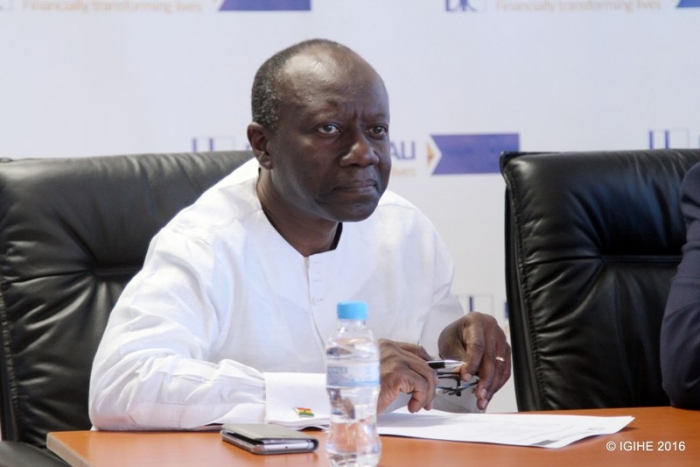
The 2017 budget was anchored on strong revenue mobilization to support government interventions and strong debt management strategy to create fiscal space and ensure fiscal consolidation.
Among other policies in the 2017 budget were:
v Planting for Food and Jobs
v Free Senior High School Education
v One District One Factory
v Establishment of Zongo Development Fund
v One Village One Dam
v US$1 million annually for all 275 constituencies under the Infrastructure for Poverty Eradication Programme (IPEP)
v the National Entrepreneurship and Innovation Plan (NEIP)
v National Industrial Revitalization Programme
v The National Digital Addressing System
v Establishment of a Fiscal Council
v Establishment of three Development Authorities; Northern Development Authority (NDA), Middle Belt Development Authority (MBA), and Coastal Development Authority (CDA).
A historical analysis of the Ghanaian economy after every election year, has shown significant improvement particularly in the macroeconomic indicators with minimal improvement in the real sector particularly agriculture and industry. The fiscal year 2017 was no different as interest rates, inflation, monetary policy rate and Treasury bill rates have all shown decreasing trend over the last 8 months.
Key Policy Expectations
McOttley Research expects the following interventions from the 2018 budget:
v Continue the fiscal consolidation efforts anchored on improving macroeconomic environment so as to monitor expenditure overruns.
v Give detailed progress on the various policy intervention mentioned above and their sources of funding. For instance, the Free SHS program facing funding and infrastructure challenges. Detail plans on the sustainable sources of funding because its expenditure would be doubled in 2018.
v We expect a detailed progress on the 51 factories that were to be built in 2017. How many of these factories have been built and at what level of completion. How many additional factories would be built in 2018?
v Critical on the agenda is government’s debt management strategy. Total debt stock stood at about GHS 138 billion (68% of GDP) as at end of June 2017. This means that by half year 2017, our total debt had increased by GHS16 billion from the GHS 122 billion. Therefore, government must show its comprehensive debt management strategy moving forward in order to create the needed fiscal space for investment and growth.
v The continuous shortfall in revenue mobilization for the past 8 months needs urgent attention. The reduction in some taxes in the 2017 budget compounded the situation resulting in the revision of budget in June 2017. Will government kowtow to this pressure by introducing new taxes? What new tax measures would be implemented to increase revenue? Will government continue to reduce or scrap taxes as a stimulus package for SME’s and other businesses? Will government maintain or reduce the current corporate taxes of 25 percent? Will the new 3 percent flat VAT rates be reviewed back to the 17.5 percent or be maintained?
v We expect government to implement policies that would widen the much talk about tax net by including the informal sector of the economy. Payment of taxes should be made more attractive to businesses and individuals. The automation of the tax system is long overdue and the 2018 budget should provide the direction for implementation. With the
introduction of the Ghana Post GPS, we expect identification and ownership to be made easier for tax compliance.
v The implementation of the interoperability platform should be quickened so as to move into an era of cashless transaction and payment to ensure financial inclusion.
In conclusion, for the country to be on a sustainable growth path, the enabling environment and business climate must be conducive for businesses and investors. We cannot continue to borrow for consumption and expect a reduction in debt stock. Borrowing is not bad if invested in growth-enhancing sectors that could pay for itself. Policies such as planting for foods and jobs and NEIP must be taken a second look at and lessons learnt from the shortfalls in 2017 so as to create the needed jobs for the youth. NEIP needs to be implemented to support SME’s and businesses to grow.
Analyst: Mustapha Mensah & Loretta Asare
research@mcottley.com























